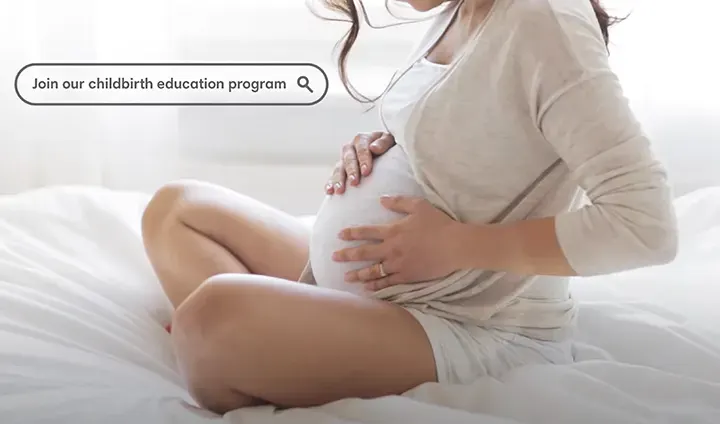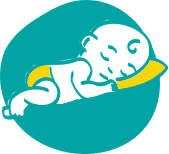Symphysis Pubis Dysfunction (SPD) During Pregnancy
What is symphysis pubis dysfunction (SPD)? It’s a condition that causes pelvic pain during pregnancy due to increased flexibility in the pubic symphysis joint. This happens as pregnancy hormones loosen ligaments to prepare your body for birth. The result can be discomfort, limited mobility, and pelvic bone pain.
The good news? While symphysis pubis dysfunction during pregnancy can be painful, it is manageable. There are effective symphysis pubis dysfunction treatments, including exercises, physiotherapy, and lifestyle adjustments, that can help relieve discomfort. In most cases, symptoms improve or disappear after birth.
Read on to learn about symphysis pubis dysfunction symptoms, why it happens, and how to manage it for a more comfortable pregnancy.
What Is Symphysis Pubis Dysfunction (SPD) in Pregnancy?
Symphysis pubis dysfunction (SPD), also known as pelvic girdle pain (PGP) can happen during pregnancy when the joint called the pubic symphysis that connects the two halves of your pelvic bone moves too much.
The symphysis pubis joint is normally very stiff and doesn’t move much at all, but during pregnancy, a hormone called relaxin is released in your body to help relax the muscles and joints as your body prepares for giving birth. As part of this, the symphysis pubis joint is also loosened.
As the pelvic joint moves more than usual, and even potentially becomes uneven, you may experience pelvic pain.
Be sure to contact your healthcare provider if you have any pelvic pain during pregnancy, as the cause of your discomfort may not be symphysis pubis dysfunction (SPD). Your healthcare provider can both diagnose SPD and rule out something else like an ectopic pregnancy, a urinary tract infection, or pelvic inflammatory disease, for example.
Symphysis Pubis Dysfunction (SPD) Symptoms During Pregnancy
These are some of the potential symptoms of symphysis pubis dysfunction:
Mild discomfort, shooting, throbbing, or burning pain in the lower pelvis area
Lower back pain that radiates into the abdomen, groin area, thigh, and/or leg
Pain when you make certain movements like putting weight on one leg or when spreading your legs apart
Pain with regular daily movements like walking, rolling over in bed, going up or down stairs, bending forward, or getting up from a seated position
Hearing or feeling a snapping, clicking, or grinding in the lower pelvis area
Pain during sex
Unexplained fatigue.
Keep in mind that the pain you might feel because of symphysis pubis dysfunction can range from mild to severe.
The pain from SPD is often worsened by:
Lifting
Movements involving using your hips, such as walking, bending forward, or getting up from a chair
Sitting or standing for long periods.
Symphysis Pubis Dysfunction Treatment
If your healthcare provider diagnoses symphysis pubis dysfunction, there are several treatment methods to help ease the pain they may recommend. On top of that, keep in mind that SPD pain usually goes away after you give birth.
Here are some symphysis pubis dysfunction treatment methods your provider might suggest to help with pain relief:
Taking pain relief medications
Taking NSAIDs (nonsteroidal anti-inflammatory drugs)
Physical therapy. Your provider or physical therapist might show you safe exercises that help strengthen your back and abdomen. This may also include doing Kegel exercises to help strengthen your pelvic floor
Using a wheelchair, crutches, or a walker, per your provider's recommendation, if the pelvic girdle pain is severe and affects your mobility during pregnancy
Using a TENS unit (transcutaneous electrical nerve stimulation).
How to Relieve Pelvic Pain During Pregnancy
Here are some home remedies you can try to help relieve symphysis pubis dysfunction pain during pregnancy. Please remember to consult your healthcare provider for a diagnosis and recommendations before trying any of the following:
Wear a pelvic support belt
Rest when needed
Apply an ice pack
Sleep on your side with a pillow between your knees
Consider getting a massage
Use supportive pillows while resting or sleeping
Practice Kegel exercises to strengthen your pelvic floor
Avoid sitting for prolonged periods
Refrain from lifting heavy objects
Learn safe bending and movement techniques.
How Can You Prevent Symphysis Pubis Dysfunction
Although you can’t entirely prevent pelvic pain during pregnancy, there are ways to reduce your risk and help avoid injuring your pelvic area. Here are some things you can do:
Wear comfortable shoes with good support
Maintain a healthy weight for you throughout your pregnancy. Your provider can help you stay on track
Move in safe and mindful ways and maintain a good posture
Don’t overdo it. Listen to your body and rest if you feel pain or discomfort.
Pelvic Pain by Trimester
If you’re experiencing pelvic pain during your first, second, or third trimester, it’s always best to consult your healthcare provider for a diagnosis and treatment options. Here are some possible causes and concerns related to pelvic pain in each trimester:
First Trimester
Causes. In the first trimester, pelvic pain may be related to hormonal changes, such as the hormone relaxin, which loosens ligaments in the pelvis. Round ligament pain can also occur as the uterus expands. Light cramping may be due to implantation.
Concerns. Severe or persistent pelvic pain could be a sign of more serious conditions, such as ectopic pregnancy or miscarriage. It's important to contact your healthcare provider if the pain is intense or accompanied by bleeding.
Second Trimester
Causes. As well as symphysis pubis dysfunction being a potential cause of pelvic pain, as the baby grows, the expanding uterus may put pressure on surrounding ligaments and organs, leading to discomfort. This is commonly known as round ligament pain. As the growing uterus presses on the sciatic nerve, this may also cause pain in the lower back and pelvic area during the second trimester.
Concerns. If the pain is severe or associated with other symptoms such as fever or abnormal discharge, it could signal infections like a urinary tract infection (UTI) or preterm labour.
Third Trimester
Causes. In the third trimester, pelvic pain can be due to the baby’s position as they prepare for birth, increased pressure on the pelvic bones, and the loosening of the pubic symphysis joint. Braxton Hicks contractions, which are practice contractions, may also contribute to discomfort.
Concerns. Sharp, constant pain or pelvic pain/pressure associated with contractions may be a sign of preterm labour or placental issues. Always report severe or unusual pain to a healthcare provider.
For any concerns, consult with your healthcare provider to rule out serious conditions.
FAQs at a Glance
To help alleviate symphysis pubis dysfunction, your healthcare provider might suggest options such as:
- exercises to strengthen core muscles
- adequate rest
- therapeutic massage
- pain relief medications.
Although symphysis pubis dysfunction might be causing you some discomfort during your pregnancy, try to remember that the pain might be helped by the treatment recommended by your healthcare provider or, eventually, by the birth of your little one.
Yes, there’s quite an A to Z of body aches and pains that you might experience while pregnant but try to bear in mind that it will all have been worth it once you’re holding your baby in your arms.
During your pregnancy journey, it’s always helpful to plan ahead by downloading the Pampers Club app. Our app offers exclusive pregnancy and parenting content, as well as rewards and discounts on all your diaper and wipes purchases.
How We Wrote This Article The information in this article is based on expert advice found in trusted medical and government sources, such as the American Academy of Pediatrics and the American College of Obstetricians and Gynecologists. You can find a full list of sources used for this article below. The content on this page should not replace professional medical advice. Always consult medical professionals for full diagnosis and treatment.
Join a World of Support





